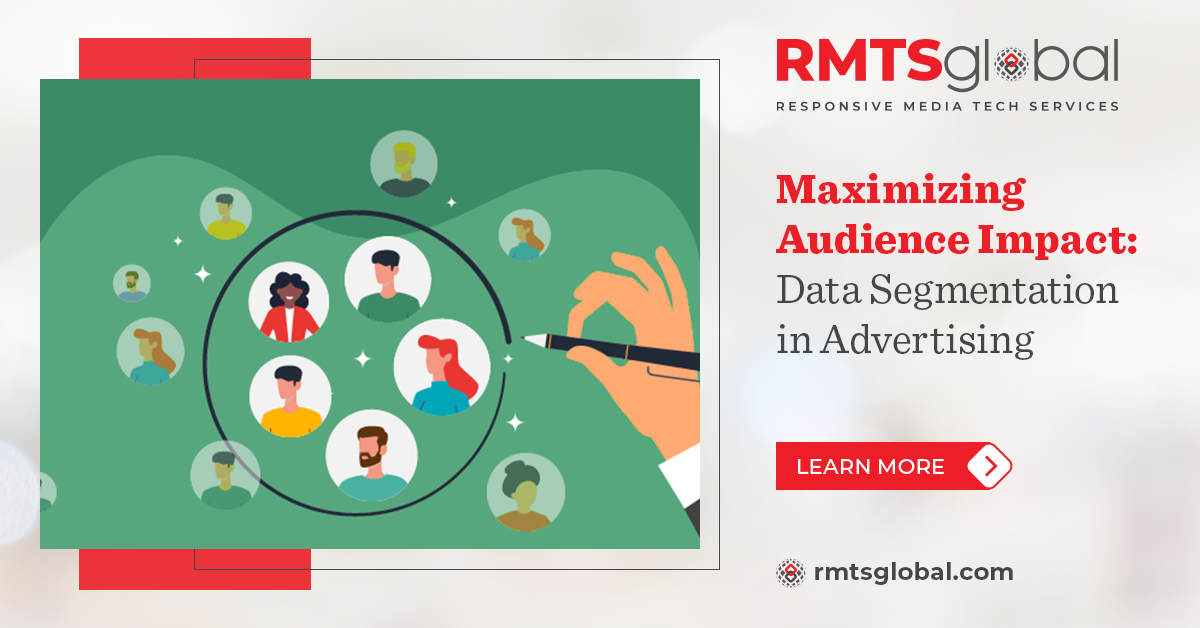Maximizing Audience Impact: Data Segmentation in Advertising
In the ever-evolving landscape of digital advertising, audience targeting has emerged as a critical strategy for marketers seeking to reach their desired audience with precision and efficiency. With the advent of programmatic advertising, advertisers now have access to a plethora of targeting options and data segmentation techniques to tailor their campaigns to specific audience segments. In this article, we will touch upon the various audience targeting options available in programmatic advertising, including contextual targeting, demographic targeting, behavioral targeting, and also do a deep dive into the complex role of data segmentation.
1. Contextual Targeting:
Contextual targeting involves serving ads based on the content of the web page or app where the ad is being displayed. By analyzing the context of the content, advertisers can ensure that their ads are relevant and aligned with the interests of the audience consuming that content. For example, an outdoor apparel brand may choose to target ads to websites or articles related to hiking, camping, or outdoor activities to reach an audience interested in outdoor gear.
2. Demographic Targeting:
Demographic targeting focuses on reaching audiences based on demographic characteristics such as age, gender, income, education, occupation, and marital status. Advertisers can leverage demographic data to tailor their messaging and creative assets to resonate with specific demographic segments. For instance, a cosmetics brand may target its ads to women aged 18-34 with a higher income level who are more likely to be interested in premium beauty products.
3. Behavioral Targeting:
Behavioral targeting involves targeting audiences based on their online behavior and activities, such as browsing history, search queries, content consumption, and previous interactions with ads. By analyzing user behavior, advertisers can identify patterns and preferences to deliver personalized ad experiences. For example, a travel agency may target ads to users who have recently searched for vacation destinations or visited travel-related websites, indicating an interest in travel.
Role of Data Segmentation:
Data segmentation plays a pivotal role in the success of programmatic advertising campaigns by enabling advertisers to effectively target and engage with their desired audience segments. Lets do an in-depth exploration of the role of data segmentation in audience targeting:
- Understanding Audience Diversity: In today’s digital landscape, audiences are diverse and multifaceted, with varying preferences, behaviors, and interests. Data segmentation allows advertisers to break down this diverse audience into smaller, more manageable segments based on common characteristics or behaviors.
- Tailoring Messaging and Creative: Once audiences are segmented, advertisers can tailor their messaging and creative assets to resonate with each segment’s specific needs, preferences, and pain points. For example, a fitness brand may create different ad creatives for segments interested in weight loss, muscle building, or general health and wellness.
- Personalization and Relevance: Segmentation enables advertisers to deliver personalized and relevant ad experiences to their target audience, increasing the likelihood of engagement and conversion. By understanding the unique needs and interests of each segment, advertisers can deliver messages that speak directly to their audience’s motivations and aspirations.
- Optimizing Ad Spend: Data segmentation allows advertisers to allocate their ad spend more effectively by targeting high-value audience segments that are most likely to convert. By focusing resources on segments with the highest potential ROI, advertisers can maximize the impact of their campaigns and achieve better results.
- Improving Campaign Performance: Segmentation enables advertisers to track and measure the performance of their campaigns at the segment level, allowing for more granular insights and optimization opportunities. By analyzing performance metrics such as click-through rates, conversion rates, and return on ad spend (ROAS) for each segment, advertisers can identify areas for improvement and refine their targeting strategies accordingly.
- Enhancing Customer Relationships: By delivering personalized and relevant ad experiences, advertisers can build stronger relationships with their audience and foster brand loyalty over time. Segmentation allows advertisers to connect with consumers on a deeper level, establishing trust and credibility that can lead to long-term customer relationships.
In essence, audience targeting and data segmentation are essential components of programmatic advertising that enable advertisers to reach their target audience with precision and relevance. By leveraging contextual targeting, demographic targeting, behavioral targeting, and data segmentation techniques, advertisers can optimize their campaigns for maximum impact and effectiveness. As programmatic advertising continues to evolve, marketers must stay informed about the latest targeting options and segmentation strategies to stay ahead of the competition and drive better results for their campaigns.
